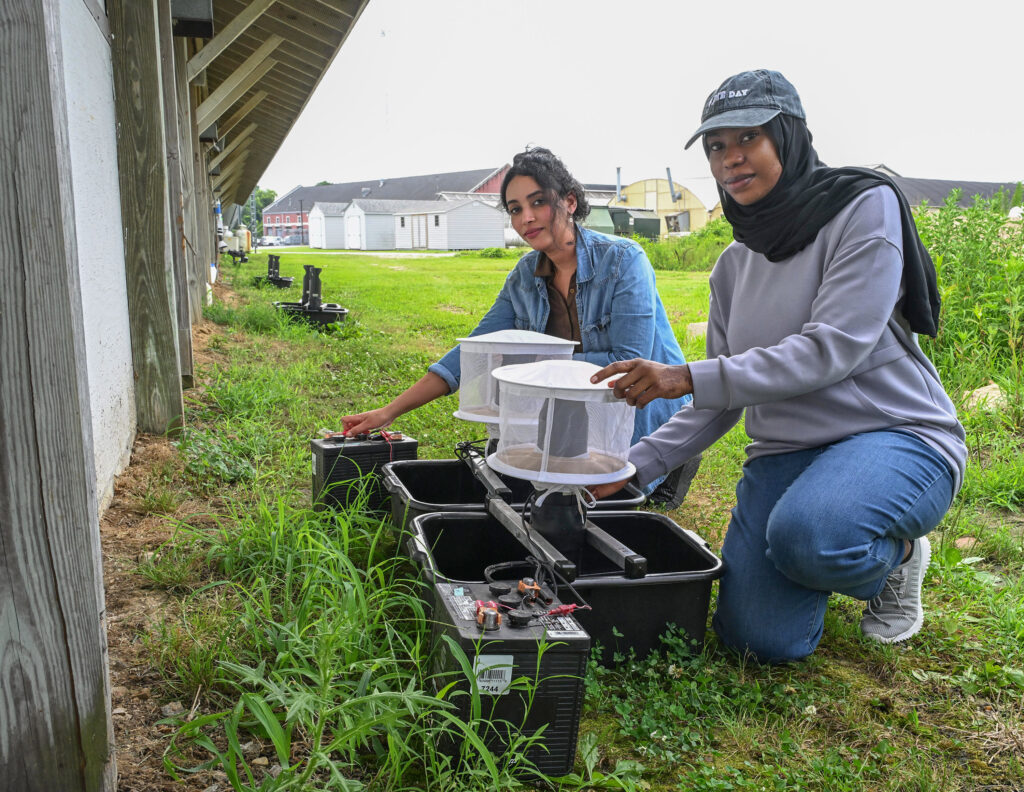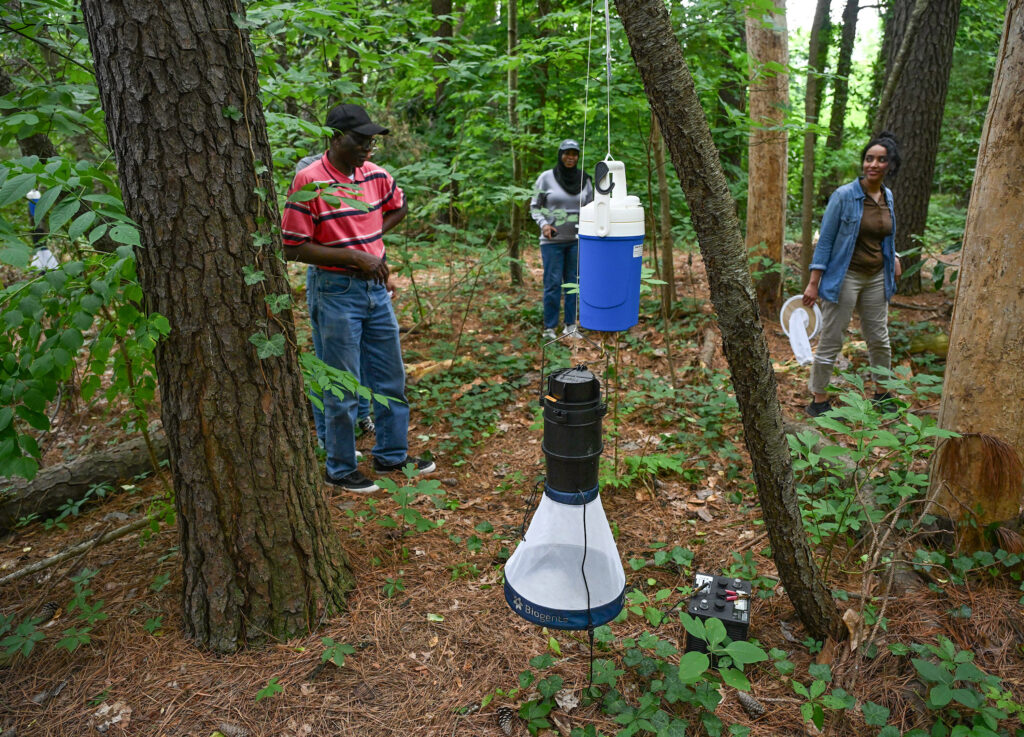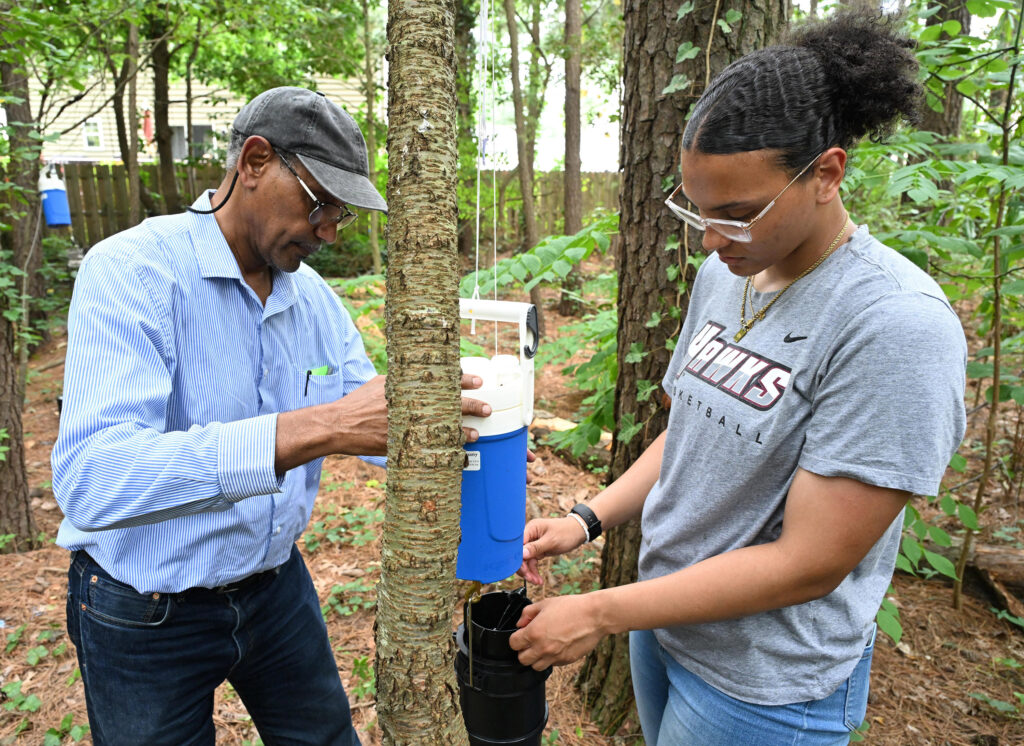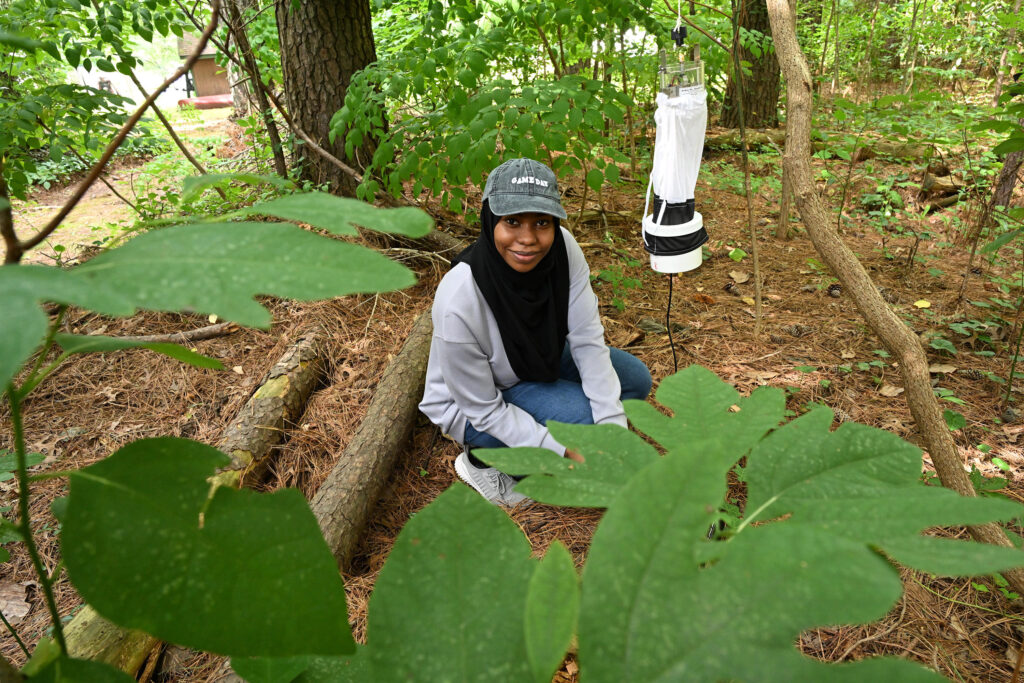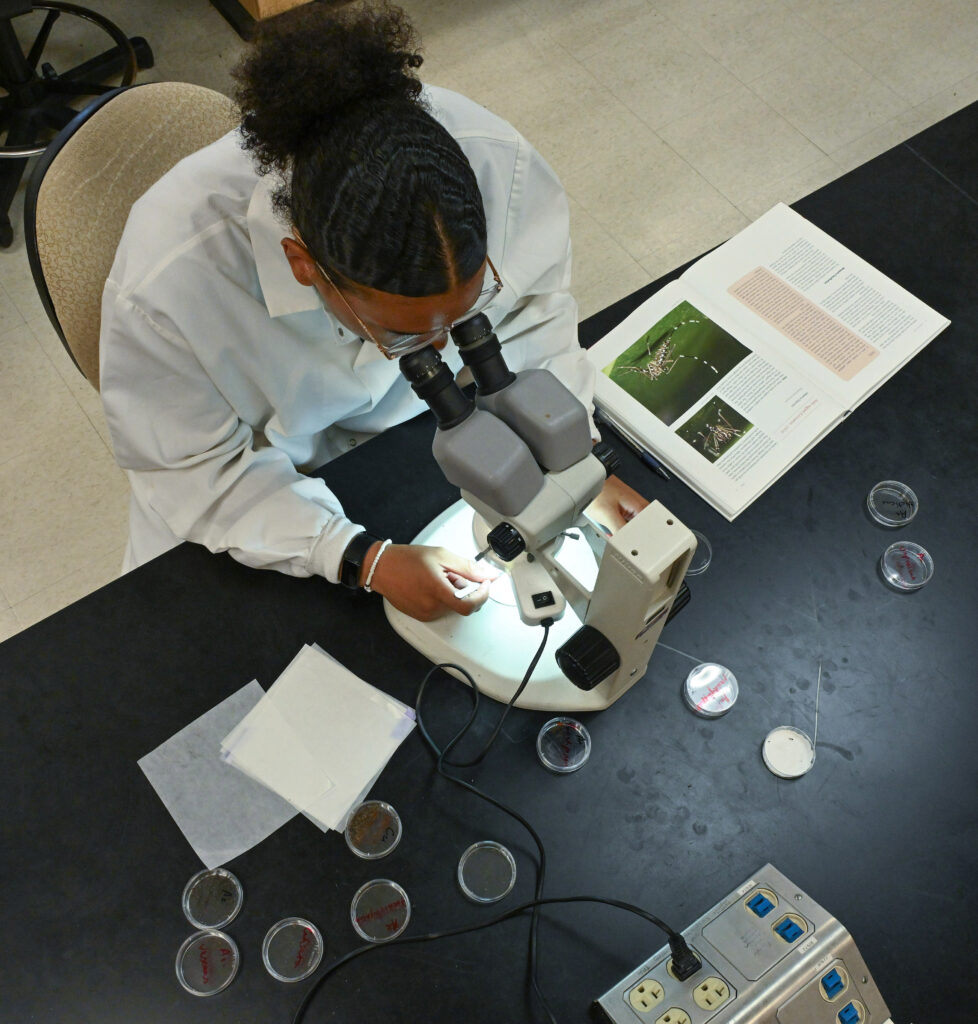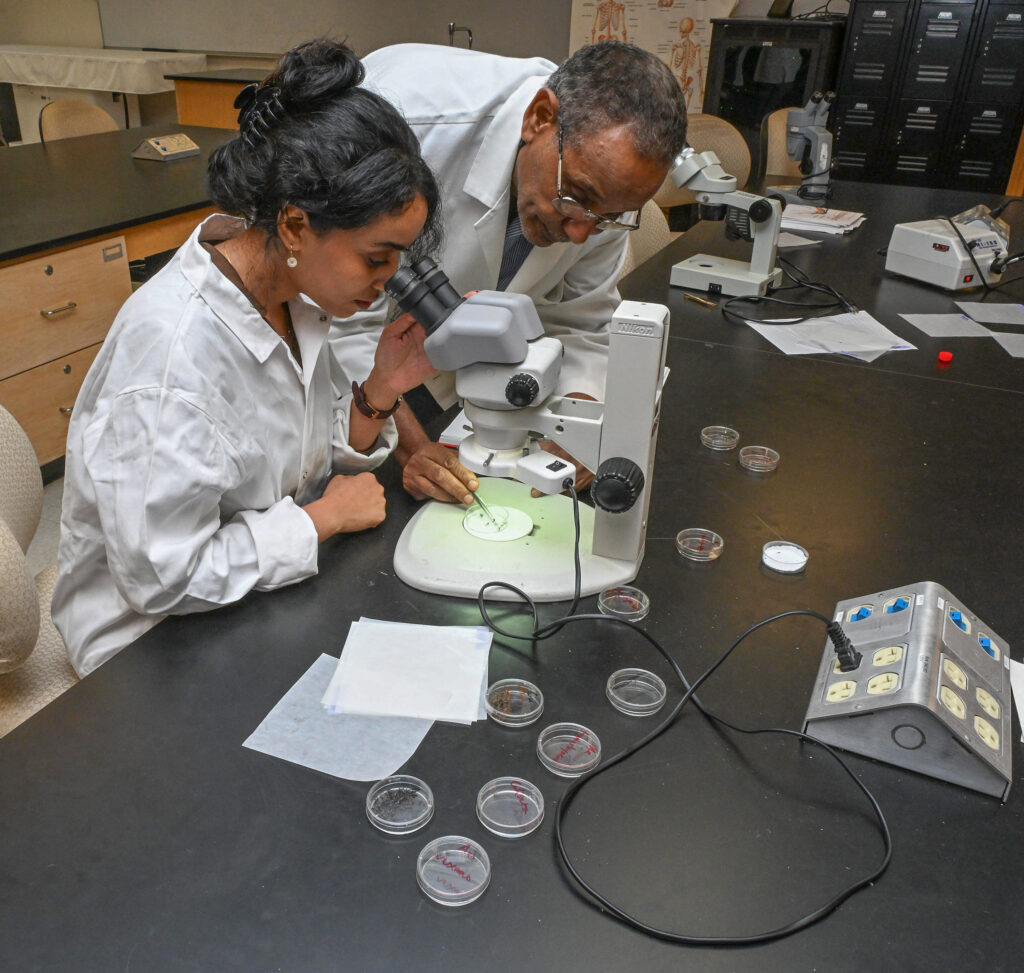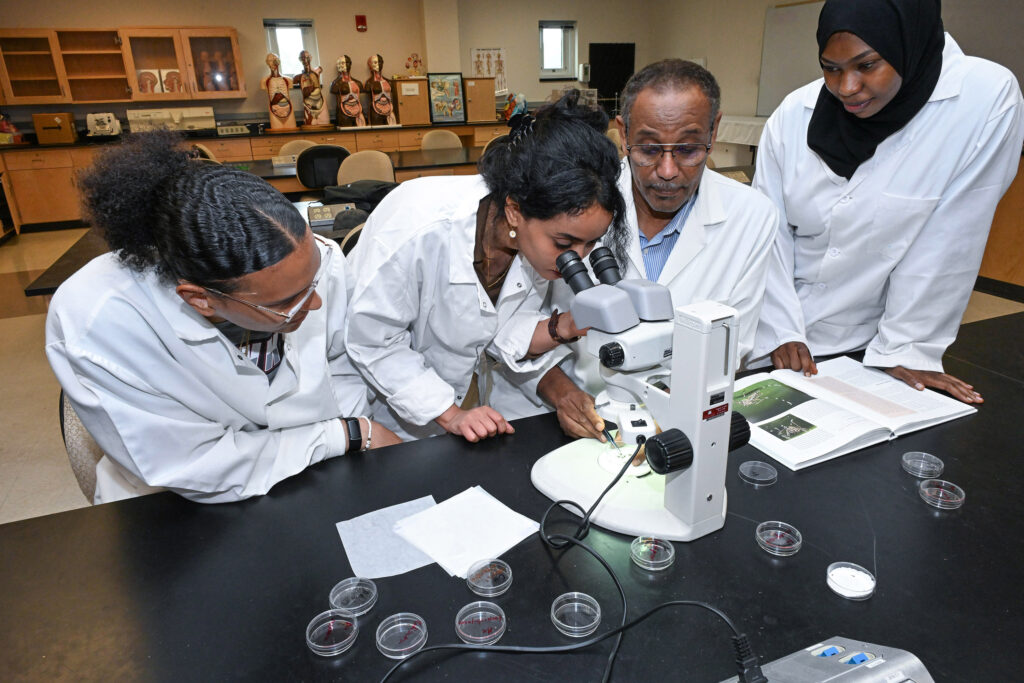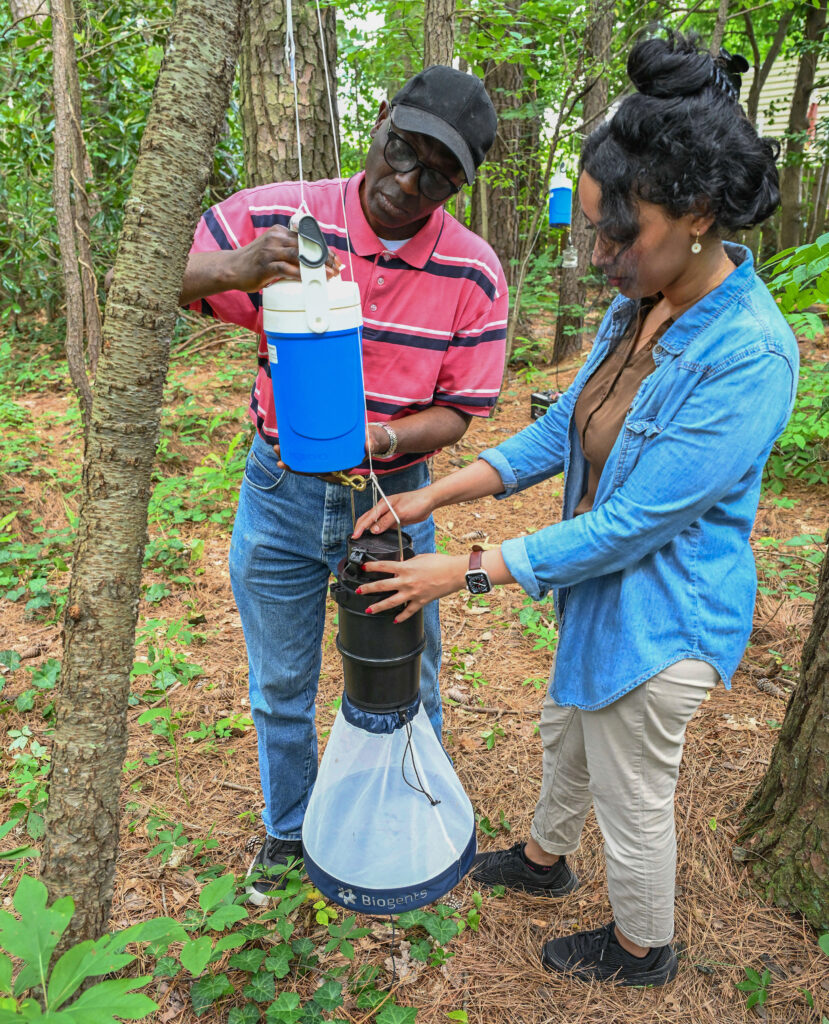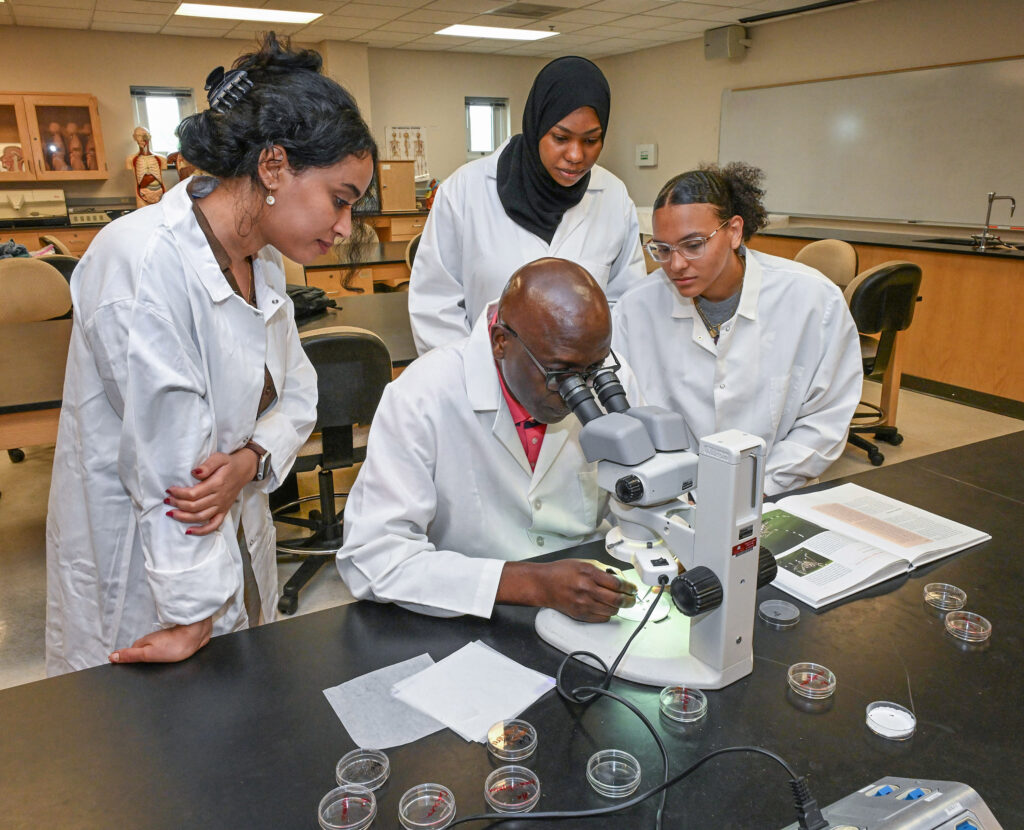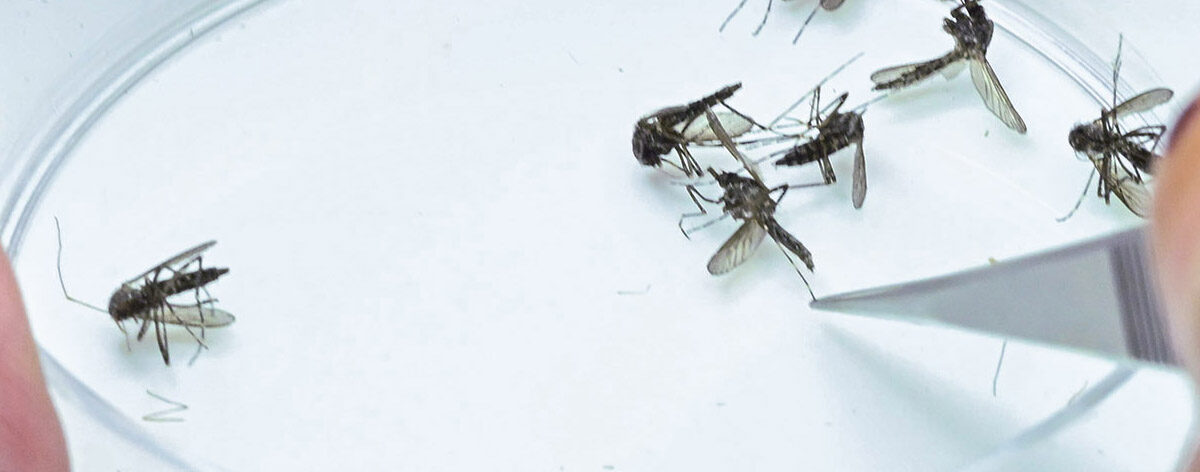
Mosquitoes in Maryland: Threats and Prevention
What you should know
Mosquitoes (Diptera: Culicidae) are blood-sucking insects affecting human and animal health as vectors of many debilitating and deadly pathogens and the allergic consequences of their bites.
- Only female mosquitoes bite people and animals to get a blood meal. Female mosquitoes need a blood meal to produce eggs.
- Mosquitoes get infected with germs, such as viruses and parasites, when they bite infected people and animals. They then pass on the germs when they bite other humans or animals.
- A few infected mosquitoes can start an outbreak in a community and put you and your family at risk of becoming sick.
- Adult mosquitoes live indoors or outdoors, while some species also live both indoors and outdoors.
Species found in Maryland
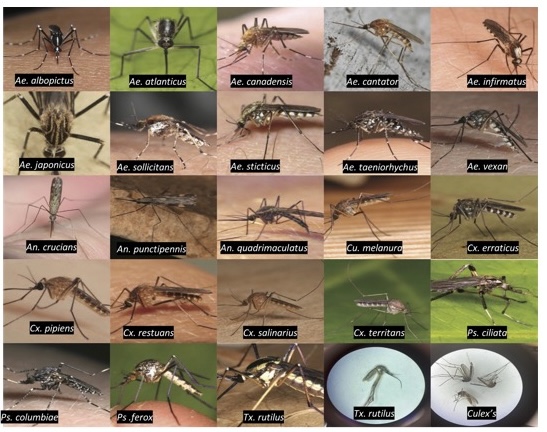
There are 59 species of mosquitoes in Maryland, according to the Maryland Department of Agriculture and, despite the lack of comprehensive quantitative studies, at least 31 mosquito species are routinely encountered in the Eastern Shore region.
In Maryland, mosquito breeding takes place from the vernal equinox in March and extends slightly past the autumnal equinox into October.
Four mosquitoes prevalent on the Eastern Shore that are vectors:
Aedes albopictus (Asian Tiger Mosquito)
- Aedes albopictus are small to medium sized mosquitoes with distinctive black and white stripping on the body and the legs. Ae. albopictus mosquitoes also possess a single distinctive white stripe down the center of their scutum. Females bite during the day and will even enter homes to feed. Aedes albopictus mosquitoes transmit diseases such as dengue, chikungunya and yellow fever.
Culex pipiens (Northern House Mosquito)
- Culex pipiens are small- to medium-sized mosquitoes with a light to medium brown color. These mosquitoes bite during the nighttime and will enter homes to feed. Culex pipiens mosquitoes transmit West Nile virus and Eastern equine encephalitis (EEE).
Anopheles species (Malaria mosquito)
- Anopheles species are medium-sized mosquitoes that are marked by their long palps (organs of touch and taste in feeding and in the inspection of potential foods and/or prey). These mosquitoes are most active and bite during the nighttime. Anopheles mosquitoes transmit the disease malaria.
Culiseta melanura (EEE mosquito)
- Culiseta melanura is characterized by a long and bent proboscis (mouthpart). This mosquito is responsible for transmitting Eastern equine encephalitis (EEE) in the wild bird population, which then gets passed on to humans, horses and other mammals.
Why You Should Care
Mosquito-borne diseases — such as malaria, filariasis, arboviral encephalitis and dengue — kill millions of people worldwide each year, especially in low-income nations in tropical areas. Although the risk of contracting deadly mosquito-borne diseases is low in the U.S., international travel and a decline in vector control programs has increased the threat of these diseases in the country.
With its extensive fresh and brackish water resources and relatively long hot summer season, the Eastern Shore of Maryland provides a favorable environment for mosquitoes to thrive.
“Increasing amounts of rain and natural disasters like hurricanes give more places for mosquitoes to breed. Sea level rise contributes to more brackish water standing where it was once dry land,” says UMES Professor Dr. Dia-Eldin A. Elnaiem.
Eastern equine encephalitis (EEE) is the most prevalent mosquito-borne disease in Maryland and the Eastern Shore. The first 2024 death in United States from EEE was reported in New England in August. That same month in Maryland, the state’s Department of Health also confirmed the first human case of West Nile virus infection.
Human Health
Mosquito-borne diseases reported in the U.S. include West Nile virus, Zika virus, Eastern equine encephalitis (EEE), St. Louis encephalitis and Western equine encephalitis (WEE). In several sites on Maryland’s Eastern Shore, mosquitoes pose significant nuisance and transmit deadly arboviruses to humans, including West Nile virus and EEE. Although no local transmission of Zika virus and malaria has been reported in the region, the possibility of the spread of these dangerous pathogens is not ruled out, especially under predicted climate change conditions and the recent reports of transmission in nearby regions. Malaria cases have been reported in Maryland and Virginia in 2023 and 2024, after being dormant for several years.
Livestock Health
Mosquitoes can transmit highly debilitating and life-threatening pathogens to livestock animals and can cause intense irritation. It can also cause extensive blood and weight loss in chickens, and significant reduction in the productivity of poultry farms. Mosquitoes are also a major concern for horse owners because they spread viral encephalitis, including Western and Eastern equine encephalomyelitis and the West Nile virus.
Pet Health
Heartworm disease is by far the biggest threat from mosquitoes for pet dogs and cats. Pets can also be infected by West Nile virus and EEE, although it is rare and do not often result in serious illness.
What UMES Extension is doing about it
UMES researchers have partnered with the Maryland Department of Agriculture (MDA) Mosquito Control Office on the Delmarva Peninsula to raise awareness of vectors, vector-borne diseases and to promote public participation in control of mosquitoes and the diseases they transmit.
Our UMES Extension specialists work with farmers, community organizations and schools to raise awareness of vectors, vector-borne diseases and to promote public participation in control of mosquitoes and the diseases they transmit.
The research, led by Drs. Dia-Eldin A. Elnaiem and Mobolaji Okulate, will be a major activity of the Infectious Disease Research Cluster at UMES and supports both undergraduate and graduate student training by providing experiential research experiences.
How to get help in Maryland
If you see mosquitoes in your home or in your community, call Mosquito Control on Maryland Eastern Shore at 410-543-6626 or fill out the form at https://www.doit.state.md.us/selectsurvey/TakeSurvey.aspx?SurveyID=740Kl54#
More resources
Mosquito FAQ
How long is the mosquito season in Maryland?
In Maryland, mosquito breeding takes place from the vernal equinox (March) and extends slightly past the autumnal equinox into October. Most springtime mosquito breeding occurs in woodlands and adjacent swamps. Floodwater species dominate the landscape, their eggs flooded by snow melt and spring rains. (MDA)
How to stop mosquitoes from biting you?
- Use Environmental Protection Agency (EPA)-registered insect repellents.
- Wear loose-fitting, long-sleeved shirts and pants.
- Wear clothing and gear treated with permethrin.
- Control mosquitoes indoors and outdoors. (CDC)
How to get rid of mosquitoes at home?
- Dump standing water
- Use screens for doors and windows
- Cover trash cans and rain barrels
How long after a mosquito bite do you get sick?
Most people bitten by an infected mosquito will not develop any symptoms. People who become ill from West Nile virus usually develop symptoms within 3-14 days after exposure, although people with weakened immune systems may take up to 3 weeks to develop symptoms. (NY Health Dept.)
Why do mosquitoes bite me?
Why some people seem to be more attractive than others to mosquitoes is the subject of much repellent (and attractant for traps) research being conducted nationwide. Carbon dioxide is the most universally recognized mosquito attractant and draws mosquitoes from up to 35 meters. When female mosquitoes sense carbon dioxide, they usually adopt a zigzagging flight path within the plume to locate its source. Once in the general vicinity of a potential host, other cues predominate, including body odors (sweat, lactic acid, etc.) and heat. Odors produced by skin microflora also play a part in inducing the mosquito to land. (Mosquito Control Association)
UMES Research in the News
UMES Mosquito research project — WMDT
Learn how UMES helps keep Maryland ahead of shifts in mosquitoes — SANS News
Mosquito menace: West Nile, Dengue fever are threats now. What you can do to combat them — DelmarvaNow.com
West Nile Virus hits Delaware — Delmarva Public Media
UMES, MDA collaborate in monitoring and studying mosquitoes and diseases they transmit — Crisfield-Somerset County Times
UMES Extension specialists focused on mosquitoes
Dr. Dia-Eldin Elnaiem, who is also a medical entomology professor
Dr. Mobolaji Okulate, who is also a microbiology professor

